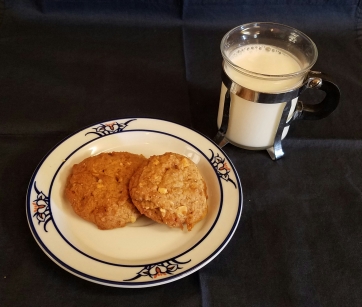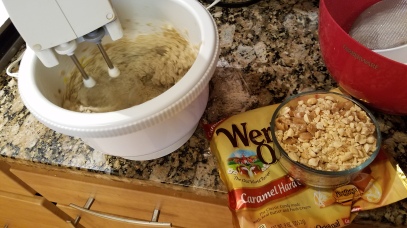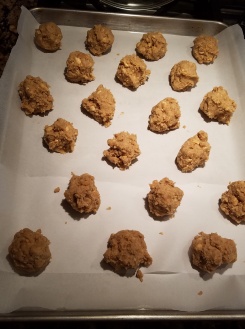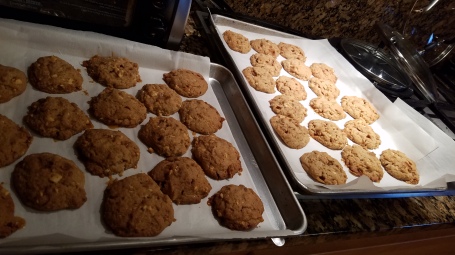Good food is a vital part of the good life – What are parents of diabetic children to do?
One challenge that faces all parents of Type 1 Diabetics is how to feed your kids in a way that balances nutrition and taste. Of course, this is always a challenge for parents, particularly if you have fussy eaters at home. We were among the lucky: our children were always gracious about trying new things and eating everything with the rest of the family at home or when we went out, no matter how unusual the dishes were.
So when our son was diagnosed with Type 1 Diabetes (T1D), or Juvenile Diabetes or Insulin Dependent Diabetes, it was a shock for us on many levels. The first shock we received was right in the ER as our doctor shared the diagnosis with us. Our 5-year old daughter, who was also in the room, was the first one to comment . She very matter-of-factly and with great seriousness said, “He will have to eat snacks regularly now.” We all looked at her in amazement. “You are right,” said our doctor. “He will have to eat snacks regularly through the day to maintain even blood-sugar levels.” We didn’t even know she knew what diabetes was! It turns out one of her classmates also had juvenile diabetes.
Frankly, till that point I had had very little interest in diabetes, and only thought of it as a disease that some people got later in life or sometimes due to poor eating habits. So when our son was taken ill and hospitalized it was an eye-opening and highly traumatic week for the entire family. But more about that experience another day.
We had to learn very quickly about checking blood sugar levels, administering insulin, and “counting carbs.” Carbohydrates became our draconian taskmaster. The confusing instructions the doctors at Stanford had given us didn’t help one bit. Maybe they were trying to simplify things for parents, but all their talk of “choices” and serving sizes, and about balancing fast-acting and slow-acting insulin with the recommended amounts of insulin with carbohydrate intake and exercise, had us reeling.
I remember with deep chagrin that first meal we gave our son when he came home from the hospital. We forced him to down this ridiculous amount of Kraft macaroni and cheese because it was on the doctors’ list of carbohydrates that were premeasured and met the recommended carbohydrate intake to balance the insulin plan the doctors had charted out for him. He gamely ate it all. As I said, our children were always good and polite eaters.
I realize that this was wrong on so many levels, not the least being the fact that this was a boy with a very sophisticated palate who rarely ate boxed macaroni and cheese at home, and definitely not when he was feeling crummy or definitely not as a celebration on coming home alive after a close call with serious ketoacidosis.
As time went by, we became adept at measuring carbohydrate content and balancing fast-acting carbs and slow-acting carbs. Nowadays nutritionists talk about the glycemic index, which I like better. We became very good at weighing the amount of food our son was eating and adjusting the amount of insulin he was taking, as opposed to using recommended serving sizes, or reading labels and forcing food into him to match food intake with a preplanned insulin amount. (This is an oversimplified description of the process, but basically we changed how we focused on managing the balancing act.)
Since we cook a lot at home, after we returned from that fateful trip to the emergency room and hospital, we gradually became very good at monitoring the carbohydrate content of the ingredients we use. Carbs, we realized, were almost everywhere, not just in sweet foods. We became aware of the importance of protein and fiber in balancing carb content and slowing their absorption. We also made ourselves the promise that we were not going force our son into giving up all the delicious foods we were so fond of cooking and eating. We would find a way to make them more compatible with his diet, make them delicious, and the whole family would continue to eat the same foods together as we had always done.
To this day, even though our son is no longer living at home, we continue to make “healthy”versions of everything we eat at home. We use whole grain and high fiber choices. We reduce the added sugar. We add proteins and nuts to many of our standard recipes. We use healthy fats. Almost always with excellent results.
My now grown up daughter’s husband often teases me about my touting my preparations as “healthy”, but they are, in my not so humble opinion, always healthier, or less unhealthy, than the version you would get elsewhere. So I think it is fair to call them healthy.
Here then is my recipe for a cookie that is based on one I found on the Werther’s site. I experimented with it and have come up with this cookie, which I admit is high in sugar ( you can use a sugar substitute if you wish), but it is an example of the delicious and “healthy” cookies I love to invent. Your challenge is to stay within a healthy serving size!

Jayanti’s Sweet and Salty Butterscotch Cookies
Ingredients
1½ cups all-purpose unbleached flour
1½ cups whole wheat flour (you can adjust the ratio using more whole wheat and less white flour. I also often replace ¼ cup flour with wheat germ, or replace 1/8 cup with flaxseed, etc.)
1 tsp baking powder
½ tsp salt
1 cup unsalted butter (at room temperature)
2 eggs (at room temperature)
1½ cup light brown sugar (Feel free to use a sugar substitute of you prefer)
1½ teaspoon pure vanilla
45-50 Werther’s hard candies or 9-10 oz (250 gms) of any hard butterscotch candy including sugarfree varieties, roughly crushed (I unwrap the candies and place them in a plastic bag, and use a meat tenderizer mallet very easily and effectively, without powdering the candies too much.)
1 cup dry-roasted, lightly salted peanuts roughly crushed
Directions
Preheat the oven to 350 F.
Prepare 2 baking trays by lining them with parchment paper. You need the parchment so the candy does not stick to the baking trays.
Sift together the flours, baking powder, and salt.
Beat the butter and brown sugar together. When light in color and texture, add the vanilla and eggs and continue beating till light and creamy.

Add the flour mixture and mix gently.
Add the crushed candy and peanuts. At this point the dough can get pretty stiff so I treat the dough like a bread dough and mix it with my hand, but being careful not to over mix.
Gently roll the dough into rough 1½ inch balls and distribute them on the parchment lined trays. You should have 40-45 cookie balls.

Bake for 15-18 minutes depending on how brown and firm you want the cookies. (You may wish to switch tray positions after about 12 minutes to get more uniformly baked cookies.)
Cool and serve. They are delicious!

The cookies will be crisp the first day, and get a little softer over the next couple of days. But they continue to be delicious.
